History
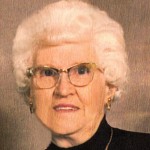
 Yesterday, while watching television, one of the shows I like to watch…Why Planes Crash…came on. This particular episode included the cause of Flight 232 in Sioux City, Iowa. This particular crash had an enormous impact on my own life, and that of my mother’s family. It was the one in which my Great Aunt Gladys Pattan Byer Cooper was killed. I have watched the footage numerous times, as well as the episode of Why Planes Crash that contained the answer, but it seems that each time, I learn something new about the crash. I’m not sure why some of the information didn’t stick in my head the first time it was aired, because it most certainly was information that was pointed out. Nevertheless, it didn’t stick in my head that first time or even the subsequent times…until now.
Yesterday, while watching television, one of the shows I like to watch…Why Planes Crash…came on. This particular episode included the cause of Flight 232 in Sioux City, Iowa. This particular crash had an enormous impact on my own life, and that of my mother’s family. It was the one in which my Great Aunt Gladys Pattan Byer Cooper was killed. I have watched the footage numerous times, as well as the episode of Why Planes Crash that contained the answer, but it seems that each time, I learn something new about the crash. I’m not sure why some of the information didn’t stick in my head the first time it was aired, because it most certainly was information that was pointed out. Nevertheless, it didn’t stick in my head that first time or even the subsequent times…until now.
I have often wondered why it takes so long to find the cause of some of the plane crashes…especially the ones where there were survivors and where the black box was so easily found, but sometimes it just does take time. One of the possibilities is that some of the tiny parts, or even large parts of the plane seem to be missing. That was the case with Flight 232. The entire fan disk of its tail mounted General Electric CF6-6 engine failed and disintegrated. I’m sure that the investigators knew that something happened to the fan disk, but without it,  they could not say what happened. The initial explosion that was heard was over Alta, Iowa…about 60 miles from their final crash site in Sioux City, Iowa. This was the point when the fan disk disintegrated. Now, 60 miles may not seem like such a large distance, but add to that the fact that the plane circled around trying to burn up it’s fuel, and trying to stay upright, and the fact that when the fan disk disintegrated, it was traveling at a tremendous amount of speed. In the end, the fan disk was discovered quite by accident three months later, on October 10, 1989, when Janice Sorenson, a farmer harvesting corn near Alta, Iowa, felt resistance on her combine, and after getting out to investigate, discovered most of the fan disk with a number of blades still attached partially buried in her cornfield. The rest of the fan disk and most of the additional blades were located later in the harvest. That would be the point that the investigation could finally bring to a conclusion the actual cause of the crash that had taken my great aunt’s life.
they could not say what happened. The initial explosion that was heard was over Alta, Iowa…about 60 miles from their final crash site in Sioux City, Iowa. This was the point when the fan disk disintegrated. Now, 60 miles may not seem like such a large distance, but add to that the fact that the plane circled around trying to burn up it’s fuel, and trying to stay upright, and the fact that when the fan disk disintegrated, it was traveling at a tremendous amount of speed. In the end, the fan disk was discovered quite by accident three months later, on October 10, 1989, when Janice Sorenson, a farmer harvesting corn near Alta, Iowa, felt resistance on her combine, and after getting out to investigate, discovered most of the fan disk with a number of blades still attached partially buried in her cornfield. The rest of the fan disk and most of the additional blades were located later in the harvest. That would be the point that the investigation could finally bring to a conclusion the actual cause of the crash that had taken my great aunt’s life.
That event has always been a little fuzzy for me. Not the crash, or even the loss of Aunt Gladys, but the whole investigation. For years I’m not sure I really wrapped my mind around the cause of the crash…at least not until I saw the animated reenactment of the crash. Then it became crystal clear what had happened. The breaking 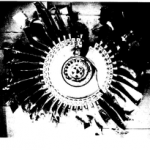
 up of the fan disk, caused by a crack that happened when the disk was made, due to impurities in the Titanium, brought down the plane. The crew, including a flight instructor who happened to be onboard, did an amazing job in their efforts not to crash. In the end, it would be on slight dip of the wind caused by a failed hydraulic system that would cause it to tap the ground and cartwheel the plane. It was the event that would forever change our family, from one who had never had someone killed in an airplane crash, to one the had. We would never forget it, and we deeply miss Aunt Gladys to this day.
up of the fan disk, caused by a crack that happened when the disk was made, due to impurities in the Titanium, brought down the plane. The crew, including a flight instructor who happened to be onboard, did an amazing job in their efforts not to crash. In the end, it would be on slight dip of the wind caused by a failed hydraulic system that would cause it to tap the ground and cartwheel the plane. It was the event that would forever change our family, from one who had never had someone killed in an airplane crash, to one the had. We would never forget it, and we deeply miss Aunt Gladys to this day.
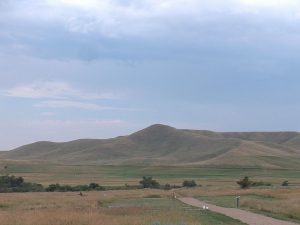 Anyone who has lived in Wyoming for any length of time knows that the state is dotted with forts from the old west. These forts shaped the state by protecting the inhabitants from the Indians…or at least the did their very best to do so. One such fort that didn’t work out so well was Fort Phil Kearney. Construction on the fort began Friday July 13, 1866 by 18th Infantry Companies A, C, E and H of the 2nd Battalion, under the direction of the regimental commander and Mountain District commander Colonel Henry B Carrington. The post was named for Major General Philip Kearny, who was a popular figure in the American Civil War. The fort was located along the east side of the Bighorn Mountains in what is now northern Johnson County, approximately 15 miles north of Buffalo, Wyoming. Along with Fort Reno and Fort C F Smith, Fort Phil Kearney was established along the Bozeman Trail in the Powder River Country at the height of the Indian Wars to protect prospective miners from the Indians while they were
Anyone who has lived in Wyoming for any length of time knows that the state is dotted with forts from the old west. These forts shaped the state by protecting the inhabitants from the Indians…or at least the did their very best to do so. One such fort that didn’t work out so well was Fort Phil Kearney. Construction on the fort began Friday July 13, 1866 by 18th Infantry Companies A, C, E and H of the 2nd Battalion, under the direction of the regimental commander and Mountain District commander Colonel Henry B Carrington. The post was named for Major General Philip Kearny, who was a popular figure in the American Civil War. The fort was located along the east side of the Bighorn Mountains in what is now northern Johnson County, approximately 15 miles north of Buffalo, Wyoming. Along with Fort Reno and Fort C F Smith, Fort Phil Kearney was established along the Bozeman Trail in the Powder River Country at the height of the Indian Wars to protect prospective miners from the Indians while they were  traveling north from the Oregon Trail to what is now Montana.
traveling north from the Oregon Trail to what is now Montana.
By fall, Carrington had erected an imposing symbol of American military power. A tall wooden wall surrounded a compound the size of three football fields. Inside the walls, Carrington built nearly 30 buildings, including everything from barracks and mess halls to a stage for the regimental band. Only the most massive and determined Indian attack would have been capable of taking Fort Phil Kearny. Unfortunately, Carrington’s mighty fortress had one important flaw…a failure to plan really. The nearest stands of timber were several miles away. To obtain the wood essential for heating and further construction, a detachment had to leave the protection of the fort every day. The Indians naturally began to prey on these Wood Trains. In December, a massive Indian ambush wiped out a force of 80 soldiers under the command of Captain William Fetterman.
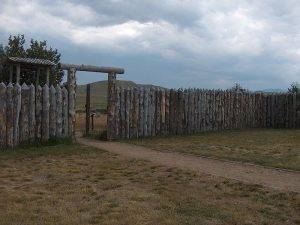
Fort Phil Kearney was named the “hated post on the Little Piney” by the Indians, and it played an important role in Red Cloud’s War. The area around the fort was the site of the Fetterman Fight in 1866 and the Wagon Box Fight in 1867. By 1868, the Union Pacific Railroad had reached far enough west that emigrants could reach the Montana gold fields through what is now Idaho, which made the dangerous Bozeman Trail an unnecessary route. All three forts along the trail were abandoned as part of the Treaty of Fort Laramie in 1868. Shortly after the treaty, Fort Phil Kearney was burned to the ground by Cheyenne Indians. I guess they really did hate it.
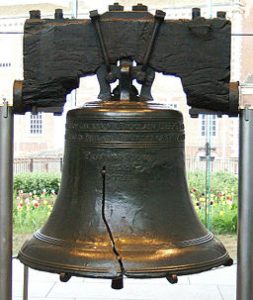 Everyone has heard of the Liberty Bell. The bell was ordered in 1751, to commemorate the 50th anniversary of Pennsylvania’s original constitution. The Pennsylvania Provincial Assembly ordered the 2,000 pound copper and tin bell. The bell was placed in the Pennsylvania State House, which is now known as Independence Hall. The bell rang out summoning citizens to the first public reading of the Declaration of Independence, by Colonel John Nixon. The document was adopted by delegates to the Continental Congress meeting in the State House on July 4th, however, the Liberty Bell, inscribed with the Biblical quotation, “Proclaim Liberty Throughout All the Land unto All the Inhabitants Thereof,” was not rung until the Declaration of Independence was returned from the printer on July 8th.
Everyone has heard of the Liberty Bell. The bell was ordered in 1751, to commemorate the 50th anniversary of Pennsylvania’s original constitution. The Pennsylvania Provincial Assembly ordered the 2,000 pound copper and tin bell. The bell was placed in the Pennsylvania State House, which is now known as Independence Hall. The bell rang out summoning citizens to the first public reading of the Declaration of Independence, by Colonel John Nixon. The document was adopted by delegates to the Continental Congress meeting in the State House on July 4th, however, the Liberty Bell, inscribed with the Biblical quotation, “Proclaim Liberty Throughout All the Land unto All the Inhabitants Thereof,” was not rung until the Declaration of Independence was returned from the printer on July 8th.
The bell was made of inferior materials, and cracked during the first test. It was recast twice and finally hung from the State House steeple in June 1753. The bell was rung on special occasions, such as when King George III ascended to the throne in 1761, and to call the people together to discuss such important things as the controversial Stamp Act of 1765. With the outbreak of the American Revolution in April 1775, the bell was rung to announce the battles of Lexington and Concord. Of course, the most famous time it was rung was July 8, 1776, when it summoned Philadelphia citizens for the first reading of the Declaration of Independence.
When the British were advancing on Philadelphia in the fall of 1777, the bell was removed and hidden in Allentown to protect it from being melted down by the British to be used for cannons. Following the defeat of the British in 1781, the bell was returned to it’s place in Philadelphia which was the nation’s capital from 1790 to 1800. In addition to marking important events, the bell was used as a part of the celebrations such as George Washington’s birthday on February 22, and Independence Day on July 4. In 1839, bell was first given it’s name when it was coined the Liberty Bell in a poem.
As to the crack that finally made the Liberty Bell unsuitable for ringing, there has been some dispute. It was  finally agreed upon that the bell suffered a major break while tolling for the funeral of the chief justice of the United States, John Marshall, in 1835, and in 1846 the crack expanded to its present size while in use to mark Washington’s birthday. After that date, it was decided that the bell was unsuitable for ringing, but it was still ceremoniously tapped on occasion to commemorate important events. On June 6, 1944, when Allied forces invaded France, the sound of the bell’s dulled ring was broadcast by radio across the United States. In 1976, the Liberty Bell was moved to a new pavilion about 100 yards from Independence Hall in preparation for America’s bicentennial celebrations. The Liberty Bell will always be a symbol of patriotism and liberty in my mind.
finally agreed upon that the bell suffered a major break while tolling for the funeral of the chief justice of the United States, John Marshall, in 1835, and in 1846 the crack expanded to its present size while in use to mark Washington’s birthday. After that date, it was decided that the bell was unsuitable for ringing, but it was still ceremoniously tapped on occasion to commemorate important events. On June 6, 1944, when Allied forces invaded France, the sound of the bell’s dulled ring was broadcast by radio across the United States. In 1976, the Liberty Bell was moved to a new pavilion about 100 yards from Independence Hall in preparation for America’s bicentennial celebrations. The Liberty Bell will always be a symbol of patriotism and liberty in my mind.
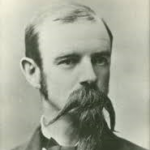 In my many hikes to the Harney Peak lookout, I have noticed many times the marker there for Dr Valentine McGillycuddy. I suppose that the main reason it has stuck in my head is because of my grandfather, George Byer, who used to call our house and ask for Mrs McGillycuddy. We always knew it was Grandpa, but we went along with the joke anyway. Of course, Grandpa’s Mrs McGillycuddy was fictional, while Valentine McGillycuddy was a real person. I did some research a few years ago, and found out that Valentine McGillycuddy was the first white man to climb all the way to the top of Harney Peak. Many have followed in his footsteps, myself and my husband included. Harney Peak, so named in the late 1850s by Lieutenant Gouverneur K. Warren in honor of General William S. Harney, who was commander of the military in the Black Hills area. The Lakota Sioux Indians called it Hinhan Kaga, which means “Making of Owls” in English. I think I like that name.
In my many hikes to the Harney Peak lookout, I have noticed many times the marker there for Dr Valentine McGillycuddy. I suppose that the main reason it has stuck in my head is because of my grandfather, George Byer, who used to call our house and ask for Mrs McGillycuddy. We always knew it was Grandpa, but we went along with the joke anyway. Of course, Grandpa’s Mrs McGillycuddy was fictional, while Valentine McGillycuddy was a real person. I did some research a few years ago, and found out that Valentine McGillycuddy was the first white man to climb all the way to the top of Harney Peak. Many have followed in his footsteps, myself and my husband included. Harney Peak, so named in the late 1850s by Lieutenant Gouverneur K. Warren in honor of General William S. Harney, who was commander of the military in the Black Hills area. The Lakota Sioux Indians called it Hinhan Kaga, which means “Making of Owls” in English. I think I like that name.
Dr McGillycuddy first came to the Black Hills with the Jenny-Newton Party. His mission was to survey and map 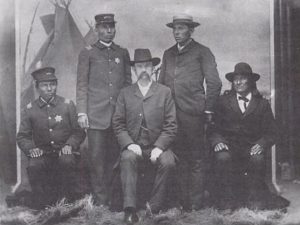
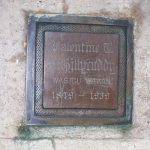 the Black Hills, and to confirm that gold had been discovered there. It was during this excursion that he climbed Harney Peak. There had been other white men to climb the mountain, including General George Custer, but they all stopped just short of the peak, because it was to difficult to make it…something I think I can relate to. McGillycuddy angled a felled tree into a crevice in the granite, and made his way to the very top. I can totally feel his elation and sense of accomplishment, since I have felt the same way myself. My guess is that it would not be the last trip he made to the top either. That mountain has a way of calling you back for a second and even third or more visits.
the Black Hills, and to confirm that gold had been discovered there. It was during this excursion that he climbed Harney Peak. There had been other white men to climb the mountain, including General George Custer, but they all stopped just short of the peak, because it was to difficult to make it…something I think I can relate to. McGillycuddy angled a felled tree into a crevice in the granite, and made his way to the very top. I can totally feel his elation and sense of accomplishment, since I have felt the same way myself. My guess is that it would not be the last trip he made to the top either. That mountain has a way of calling you back for a second and even third or more visits.
McGillycuddy became a friend to Crazy Horse, and in fact was with him when he died after being stabbed at Fort Robinson, Nebraska in 1877. After that time, the Lakota Sioux named McGillycuddy Tasunka Witko Kola, 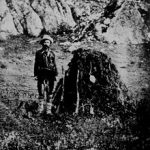 which means “Crazy Horse’s Friend” in English. Other Native Americans named McGillycuddy Wasicu Wakan, which means “Holy White Man” in English. Dr Valentine McGillycuddy did lead a very amazing life. His first wife died, and he moved to San Francisco to continue his medical practice. There he married Julia Blanchard. After he passed away in 1939, Julia wrote a book about his life called “McGillycuddy, Agent” which was how he signed his name during his favorite role in life. He was a friend to the Indians, and did his best to educate them by building a school for the children. He was a calming influence on the relationship between the Indians and the White Man. It is quite fitting then that his ashes be entombed on the mountain that he loved. It gives a totally different feeling to the little plaque that is there…if one researches it.
which means “Crazy Horse’s Friend” in English. Other Native Americans named McGillycuddy Wasicu Wakan, which means “Holy White Man” in English. Dr Valentine McGillycuddy did lead a very amazing life. His first wife died, and he moved to San Francisco to continue his medical practice. There he married Julia Blanchard. After he passed away in 1939, Julia wrote a book about his life called “McGillycuddy, Agent” which was how he signed his name during his favorite role in life. He was a friend to the Indians, and did his best to educate them by building a school for the children. He was a calming influence on the relationship between the Indians and the White Man. It is quite fitting then that his ashes be entombed on the mountain that he loved. It gives a totally different feeling to the little plaque that is there…if one researches it.
 For me, there is no more perfect way to celebrate Independence Day that to come to the Black Hills of South Dakota. I can’t think of a more patriotic place that is close enough to my home in Wyoming to be able to go to each year. The Black Hills is a shrine to patriotism. Mount Rushmore…home to the faces of four presidents, George Washington, Thomas Jefferson, Theodore Roosevelt, and Abraham Lincoln…brings home that spirit of patriotism that lives inside me. I love going to Mount Rushmore, and every time I go, I feel a sense of awe. These great men did the things necessary to make our country great. We don’t often think about the sacrifice a president made, but George Washington was a great soldier before he was president. He, along with the help of an ancestor of my husband, Bob’s, Henry Knox worked out a strategy to win the Revolutionary War, thereby winning our independence. Thomas Jefferson was the author of the Declaration of Independence. Abraham Lincoln was the
For me, there is no more perfect way to celebrate Independence Day that to come to the Black Hills of South Dakota. I can’t think of a more patriotic place that is close enough to my home in Wyoming to be able to go to each year. The Black Hills is a shrine to patriotism. Mount Rushmore…home to the faces of four presidents, George Washington, Thomas Jefferson, Theodore Roosevelt, and Abraham Lincoln…brings home that spirit of patriotism that lives inside me. I love going to Mount Rushmore, and every time I go, I feel a sense of awe. These great men did the things necessary to make our country great. We don’t often think about the sacrifice a president made, but George Washington was a great soldier before he was president. He, along with the help of an ancestor of my husband, Bob’s, Henry Knox worked out a strategy to win the Revolutionary War, thereby winning our independence. Thomas Jefferson was the author of the Declaration of Independence. Abraham Lincoln was the  man responsible for ending slavery in the United States, and Teddy Roosevelt was chosen because of his contributions to business, conservation and the creation of the Panama Canal. These were four men who saw just how great this nation could be, and who worked to make sure that it always would be a great Constitutional Republic.
man responsible for ending slavery in the United States, and Teddy Roosevelt was chosen because of his contributions to business, conservation and the creation of the Panama Canal. These were four men who saw just how great this nation could be, and who worked to make sure that it always would be a great Constitutional Republic.
For most of us, the Independence Day celebration would not be complete without a grand fireworks display. I have been to a lot of fireworks displays in my lifetime, but few can match the display that takes place every year in Custer, South Dakota. They start by doing the roll call of the states. I have been amazed over the years that almost every state is represented. Then the fireworks begin, with synchronized music, that is the best mix I have ever heard. Of course, every patriotic song in existence is sung, and the display seems to go on for hours. By the time the evening is over, you truly feel like you have celebrated our nation’s birth. I always walk away feeling more patriotic than when I arrived…if that’s possible.

I believe that the United States of America is one of the greatest countries on earth, and in the past few years, people have been trying to tear it down, and make us believe that we are not a great nation with great people. I don’t like that. I don’t like that our government tries to take away our rights, and tries to change the fabric of this nation into a nation of whiney babies that I hardly recognize. I hate to make Independence Day a story about the election, but it’s time to “Make America Great Again.” It’s time to fight for our Constitution, and the freedoms it provides. If we don’t fight for those rights now, they will be gone forever, and with them would go the nation we love. I pray that you all have a very safe and happy Independence Day!!
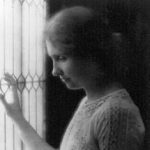 As a young girl, I read a book about Helen Keller. I became very interested in her life. She was truly inspirational to me. It wasn’t really about the fact that she was deaf, blind, and mute, but rather about how she overcame all of those obstacles to become a really great woman in history. Of course, the truth is that without another girl who was losing her own sight, Helen Keller might well have gone on with her life in the almost barbaric way she was being allowed to grow up. Helen’s family had no idea how to raise her. In fact, they had no idea what to do with her at all. She was completely out of control. She threw tantrums when she didn’t get her way. She ate off of everyone’s plates…completely destroying the meal that was on there until she found what she wanted, and then moving on to the next plate. I’m sure that there was never a peaceful meal in that house, much less a peaceful day. Every time Helen didn’t like how things were going, the screaming began, and the family cringed.
As a young girl, I read a book about Helen Keller. I became very interested in her life. She was truly inspirational to me. It wasn’t really about the fact that she was deaf, blind, and mute, but rather about how she overcame all of those obstacles to become a really great woman in history. Of course, the truth is that without another girl who was losing her own sight, Helen Keller might well have gone on with her life in the almost barbaric way she was being allowed to grow up. Helen’s family had no idea how to raise her. In fact, they had no idea what to do with her at all. She was completely out of control. She threw tantrums when she didn’t get her way. She ate off of everyone’s plates…completely destroying the meal that was on there until she found what she wanted, and then moving on to the next plate. I’m sure that there was never a peaceful meal in that house, much less a peaceful day. Every time Helen didn’t like how things were going, the screaming began, and the family cringed.
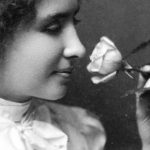 It all started when she was a little baby. She had a very bad fever. They weren’t sure Helen would survive. Nevertheless, she did, but the damage was done. Before long they realized that she couldn’t hear, or see, and the few words she had learned soon left her, because she was locked inside herself. She was living in quiet darkness. The only things she knew were the smells of her family, food cooking, and her way around the house. Her parents felt sorry for her, so they gave her what she wanted. Soon all it took to make them give in, was a tantrum, but Helen was getting older, and she was out of control. In fact, when her younger sister was born, she dumped her out of a cradle that she wanted to use for her doll. Her parents decided that something had to be done, or she would have to be placed in a home for the mentally insane.
It all started when she was a little baby. She had a very bad fever. They weren’t sure Helen would survive. Nevertheless, she did, but the damage was done. Before long they realized that she couldn’t hear, or see, and the few words she had learned soon left her, because she was locked inside herself. She was living in quiet darkness. The only things she knew were the smells of her family, food cooking, and her way around the house. Her parents felt sorry for her, so they gave her what she wanted. Soon all it took to make them give in, was a tantrum, but Helen was getting older, and she was out of control. In fact, when her younger sister was born, she dumped her out of a cradle that she wanted to use for her doll. Her parents decided that something had to be done, or she would have to be placed in a home for the mentally insane.
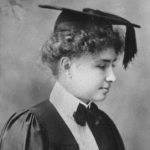 In a last ditch effort, they hired Annie Sullivan, who was a teacher and losing her sight too. She could teach, and she was stubborn. Both were things Helen needed desperately. It was no easy task, but really by trial and error, Annie developed a way to get things across to the girl. She used finger spelling into Helens hand. But she couldn’t talk to her, so she had to keep doing the same things until it finally clicked. On that amazing day, Helen’s real education could begin. It had been a long struggle, including fighting Helen’s family, but Annie won, and that meant Helen won. She went on to be a successful author and later a speaker. Helen learned the sounds by feeling Annie’s throat. She was truly an amazing woman. Today is the 136th anniversary of Helen Keller’s birth. She passed away on June 1, 1968.
In a last ditch effort, they hired Annie Sullivan, who was a teacher and losing her sight too. She could teach, and she was stubborn. Both were things Helen needed desperately. It was no easy task, but really by trial and error, Annie developed a way to get things across to the girl. She used finger spelling into Helens hand. But she couldn’t talk to her, so she had to keep doing the same things until it finally clicked. On that amazing day, Helen’s real education could begin. It had been a long struggle, including fighting Helen’s family, but Annie won, and that meant Helen won. She went on to be a successful author and later a speaker. Helen learned the sounds by feeling Annie’s throat. She was truly an amazing woman. Today is the 136th anniversary of Helen Keller’s birth. She passed away on June 1, 1968.
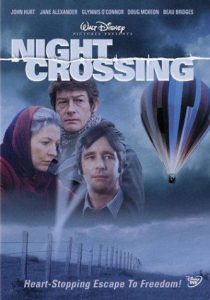
 Years ago, I watched a movie called Night Crossing, which came out in 1982. The movie was based on a true story about two families trapped in East Germany in 1979. The only way they could be free was to escape to the west. Over the years during which Germany was divided, and basically locked down. At first the people felt panic. Many of them had family on the other side, and no way to get to them. It was horrible. Escape attempts while not constant, were met with severe repercussions. I’m sure many people thought that they would always be prisoners in East Germany. Since today marks, the 68th anniversary of the ill fated Soviet blockade of their section of Germany following World War II, I was reminded of the movie I had seen.
Years ago, I watched a movie called Night Crossing, which came out in 1982. The movie was based on a true story about two families trapped in East Germany in 1979. The only way they could be free was to escape to the west. Over the years during which Germany was divided, and basically locked down. At first the people felt panic. Many of them had family on the other side, and no way to get to them. It was horrible. Escape attempts while not constant, were met with severe repercussions. I’m sure many people thought that they would always be prisoners in East Germany. Since today marks, the 68th anniversary of the ill fated Soviet blockade of their section of Germany following World War II, I was reminded of the movie I had seen.
I was so surprised about the elaborate lengths the family had to go to, in order to buy the materials needed to make a hot air balloon, with out arousing suspicions. To buy enough of the silk for the balloon, they had to go to several different locations, and tell the clerks that they were building tents for a scout group to use to go camping. I couldn’t imagine having to lie to a store clerk in order to purchase material, but then I have never lived anywhere, but in a free society, where the individual person had the right to do pretty much what they pleased. That was something that some of the people of that time, in East Germany, had never known.
While the situation was traumatic, I found myself…somehow fascinated with the process, the planning, the forethought, and the tenacity of these families. I found myself rooting for them every step of the way. Rooting for them wasn’t the thing that surprised me, however. It really was how interested I was in all the strategizing, and yes, the danger of it all. I don’t suppose the event felt anything like that to them, however. For them, this was life and death, because if they were caught, they would be killed. They would have one chance to escape, 
 and one chance only. And they still had to make the crossing, and the landing, without getting caught up in the barbed wire fencing, or landing on a fence somewhere. The whole event, while an exciting story for me, was probably an event that they could not wait to put behind them…and I don’t blame them there.
and one chance only. And they still had to make the crossing, and the landing, without getting caught up in the barbed wire fencing, or landing on a fence somewhere. The whole event, while an exciting story for me, was probably an event that they could not wait to put behind them…and I don’t blame them there.
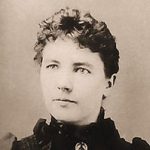 Before I began writing, I wondered how people…writers, became writers. How did they manage to come up with the material they wrote about? In the years that I have been writing, I have realized that the writers vary as much as the stories they write. Some write from experience, which is partly where I fit in, but I also like to write about events that catch my interest, and about people in my family that I have found something out about. That is very similar to my great aunt, Bertha Schumacher Hallgren. In her writings, she believed that anyone could become famous, simply by writing about the people and times they lived in. She didn’t specify that they needed any formal training, and I don’t believe she thought they did. She believed that inside every person is a story. She is right, of course.
Before I began writing, I wondered how people…writers, became writers. How did they manage to come up with the material they wrote about? In the years that I have been writing, I have realized that the writers vary as much as the stories they write. Some write from experience, which is partly where I fit in, but I also like to write about events that catch my interest, and about people in my family that I have found something out about. That is very similar to my great aunt, Bertha Schumacher Hallgren. In her writings, she believed that anyone could become famous, simply by writing about the people and times they lived in. She didn’t specify that they needed any formal training, and I don’t believe she thought they did. She believed that inside every person is a story. She is right, of course.
Laura Ingalls Wilder simply wrote the story of her life, and it became such a popular book that before long it  was a television show…all based on the writings of a little girl, who never knew if anyone would care about her stories, or maybe it didn’t matter, because maybe they were her stories, and it didn’t matter to her if anyone was interested or not. Somehow, I can’t believe that to be true. Maybe that is because I know how a writers mind works. Is a writer really a writer, if there are no readers. Writers thrive on readers who become interested in their writings.
was a television show…all based on the writings of a little girl, who never knew if anyone would care about her stories, or maybe it didn’t matter, because maybe they were her stories, and it didn’t matter to her if anyone was interested or not. Somehow, I can’t believe that to be true. Maybe that is because I know how a writers mind works. Is a writer really a writer, if there are no readers. Writers thrive on readers who become interested in their writings.
My husband’s cousin, Elizabeth “Betty” Noyes is a wonderful writer, and the author of 3 books…the last of which will be out soon. She writes a series called “Imperfect.” Her stories are romantic suspense stories and they are filled with action. Sometimes I think that fiction is a much harder thing to write about, because you don’t have reality to draw on. Of course, when you think about it, most of us do not live the exciting kinds of lives that fictional characters do. Our lives are usually much more mundane, and that is the very reason that 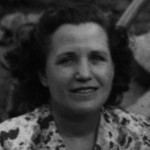 excellent books like those written by Elizabeth Noyes are so great to read. They have the ability to take us out of the everyday, into a world filled with action and excitement.
excellent books like those written by Elizabeth Noyes are so great to read. They have the ability to take us out of the everyday, into a world filled with action and excitement.
That’s really what it’s all about, you know. Whether it’s fiction or non-fiction, books take us outside ourselves. My Great Aunt Bertha quoted Charles Lamb, from an 1890 comment which stated, “I love to lose myself in other men’s minds.” See, that is really what it is all about. We like to read because it takes us into the mind of the writer. Their way of thinking, their imagination, and their viewpoint, are all different from ours, and the really cool thing is that we can go visit anytime we open the pages of a book. Its out ticket into the world inside a writers mind.
 The length of women’s skirts have varied over the years, and I happen to know that when the mini-skirt came out while I was in junior high school, my mom hated it. She never wanted her girls to wear them, nor did the other parents…so, many of the girls wore skirts rather than dresses, because skirts could be rolled up to make them shorter. It was a selling point for the skirt. I’m sure that if our mothers had known, we would have been in trouble, but that didn’t seem to matter. Of course, as style trends changed, my mom got used to the trends, and my younger sisters were allowed to wear mini-dresses too. I had a tendency to think that was really unfair, but I suppose I was the trailblazer that won them the right to wear those shorter dresses. I think my little sisters should thank me for that, don’t you?
The length of women’s skirts have varied over the years, and I happen to know that when the mini-skirt came out while I was in junior high school, my mom hated it. She never wanted her girls to wear them, nor did the other parents…so, many of the girls wore skirts rather than dresses, because skirts could be rolled up to make them shorter. It was a selling point for the skirt. I’m sure that if our mothers had known, we would have been in trouble, but that didn’t seem to matter. Of course, as style trends changed, my mom got used to the trends, and my younger sisters were allowed to wear mini-dresses too. I had a tendency to think that was really unfair, but I suppose I was the trailblazer that won them the right to wear those shorter dresses. I think my little sisters should thank me for that, don’t you?
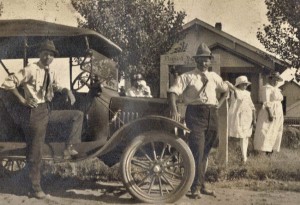 These trends have run their course over many generations, and the other day I was looking at some old pictures from my grandmother, Anna Schumacher Spencer’s album. There was a picture there that I can’t quite figure out, but one thing that jumps out at me is the older woman wearing a long dress, and the younger woman next to her in a dress that is just above her knees. The older woman in the picture doesn’t seem pleased with the younger woman. Of course, that could just be my perception of the situation, and not the reality of the situation. Still, I think that the women who started wearing those short skirts back then, were
These trends have run their course over many generations, and the other day I was looking at some old pictures from my grandmother, Anna Schumacher Spencer’s album. There was a picture there that I can’t quite figure out, but one thing that jumps out at me is the older woman wearing a long dress, and the younger woman next to her in a dress that is just above her knees. The older woman in the picture doesn’t seem pleased with the younger woman. Of course, that could just be my perception of the situation, and not the reality of the situation. Still, I think that the women who started wearing those short skirts back then, were  probably looked at as being loose…at least until they got used to the new trend.
probably looked at as being loose…at least until they got used to the new trend.
I think that while my mom didn’t maybe look at me as being loose for wanting to wear short skirts, she probably thought of me as misguided. Nevertheless, when the trend became the normal, my sisters, and yes, me too, were allowed to wear those shorter skirts. I have to say that I still think that the skirt that hits me above the knees is one of the best looks for me, but maybe that’s just my opinion. Women who are vertically challenged, as I am, can look dumpy in the longer skirts, unless the skirt is cut just right. There again, that could just be my own opinion…or maybe I’m still a trendsetter.
 My grandpa, George Byer served in the Army as a cook during World War I. He always prided himself on making sure the men had the best meals he was able to make. Wartime doesn’t always mean that the men have the tastiest of meals. In fact, the meals are pretty basic most of the time. Even in this day and age, the men in a war zone often have MREs…which is Meals Ready to Eat. They are basically dried food. They can be eaten as they are, because its not always convenient to heat them. The idea is to create a meal to keep our troops running strong out in the field. They are packed full of calories and nutrients. Of course, that doesn’t mean that they are packed full of taste.
My grandpa, George Byer served in the Army as a cook during World War I. He always prided himself on making sure the men had the best meals he was able to make. Wartime doesn’t always mean that the men have the tastiest of meals. In fact, the meals are pretty basic most of the time. Even in this day and age, the men in a war zone often have MREs…which is Meals Ready to Eat. They are basically dried food. They can be eaten as they are, because its not always convenient to heat them. The idea is to create a meal to keep our troops running strong out in the field. They are packed full of calories and nutrients. Of course, that doesn’t mean that they are packed full of taste.
Still, when I look back at my great aunt, Bertha Schumacher Hallgren’s journal, when  she spoke of the food the men had to eat during the Civil War, I have to feel awful for those brave men. She spoke of Hardtack, which was served to both armies. It was basically a thick cracker, that they could carry with them. Because of the lack of preservatives in those days, Hardtack was often wormy. It was so wormy, in fact, that the men called them Worm Castles. Hardtack was so hard that the men joked…if you bite into something soft, you might think it’s a worm, but it’s probably a ten penny nail…now that is a hard cracker. When I think of our brave men having to eat such food, it makes me feel nauseous. These are the people that we sent out to fight our battles, while we are safe at home, and here they are eating such awful things. Still, it
she spoke of the food the men had to eat during the Civil War, I have to feel awful for those brave men. She spoke of Hardtack, which was served to both armies. It was basically a thick cracker, that they could carry with them. Because of the lack of preservatives in those days, Hardtack was often wormy. It was so wormy, in fact, that the men called them Worm Castles. Hardtack was so hard that the men joked…if you bite into something soft, you might think it’s a worm, but it’s probably a ten penny nail…now that is a hard cracker. When I think of our brave men having to eat such food, it makes me feel nauseous. These are the people that we sent out to fight our battles, while we are safe at home, and here they are eating such awful things. Still, it  was what they had, that and dried or salted meats.
was what they had, that and dried or salted meats.
I suppose they got used to the food, but I still think that is was sad that we as a people were not able to give them food that was safe to eat. I have to think back on the MREs, and while they might not taste great, at least they don’t have worms. And I have to wonder what Aunt Bertha would have thought of the MRE. She had seen so many awful foods that the men had to eat, but to think of them eating something that was dried…well, that would be just strange. Maybe the MREs weren’t the tastiest meals, but at least they were safe to eat, and many a soldier has survived on them for sure. I guess that sometimes you just have to do what you have to do.

